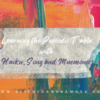Breast Cancer Information and Awareness

Deaths from Breast cancer in India is predicted to increase to 76,000 year on by 2020 with an average age of incidence shifting to 30 years from 50 years. Very disturbing facts. The age adjusted incidence rate of Breast cancer was found as high as 41 per 100,000 women in Delhi, 37.9 in Chennai, 34.4 in Bangalore and 33.7 in Thiruvananthapuram.
High time we move from disease care to preventive care. This can be done by increasing disease awareness, initiating population-based breast cancer screening programs and making breast screening available at more hospitals and healthcare centres at less cost. Through breast surveillance, cancers can be detected early when they are small and have not spread to lymph nodes making breast conservation possible as well causing reduction in mortality from breast cancer.
First understand the Risk factors:
- Compared to married women, single women showed 4–5-fold higher risk for developing breast cancer in the age group of 40–54 and above
- Nulliparous women (woman who has never given birth) have a 2.2-fold higher risk than parous women
- Having one or more first-degree relatives (mother, sisters) who have had breast cancer increases a woman’s chances of developing this disease
- BRCA1 and BRCA2 gene mutations having been identified as the major genetic cause
- The risk of developing breast cancer increases with age
- Overweight women are at a higher risk of developing breast cancer
- High breast cancer incidence have been reported in Parsi community (consanguineous marriages, late age of marriage and childbirth)
- Women who have had breast biopsies have an increased risk of breast cancer
- Women who have high breast density have an increased risk of breast cancer
- Women who have received radiation therpay to chest wall for any cause have an increased risk of breast cancer
How to detect breast cancer early on:
Breast cancer is typically detected either during a screening examination, before symptoms have developed, or after a woman notices a lump. Most masses seen on a mammogram and most breast lumps turn out to be benign.
Any persistent change in the breast should be evaluated by a physician
– The most common physical sign is a painless lump
– Sometimes breast cancer can spread to underarm lymph nodes and cause a lump or swelling
– Breast pain or heaviness
– Swelling, thickening, or redness of the breast’s skin
– Nipple abnormalities such as spontaneous discharge

- Clinical breast exam every 6-12 months beginning at age 25
- Annual breast MRI and mammogram beginning at age 25-40 (the age to begin screening depends on the type of gene mutation and/or youngest age of breast cancer in the family)
- Consider 3D mammography
One could start surveillance using online risk calculators:
- Breast Cancer Surveillance Consortium Risk Calculator : https://tools.bcsc-scc.org/BC5yearRisk/calculator.htm
- Assess you risk: https://www.assessyourrisk.org/
- NCIs BC risk assessment tool: https://www.cancer.gov/bcrisktool/
Evaluation of Breast Lump:
- Clinical Examination by experienced clinician, preferably a breast surgeon
- Breast Imaging: Bilateral Mammogram and or Ultrasound or MRI as appropriate
- Histopathology: Core biopsy (Ideal). Excision Biopsy/Incision biopsy if indicated









In today’s age, when a woman must juggle many roles, her health is of utmost importance. Every woman’s health is dependent on many factors. Timely health tests can be of great help.
https://www.parentcircle.com/article/10-must-do-health-tests-for-every-woman/